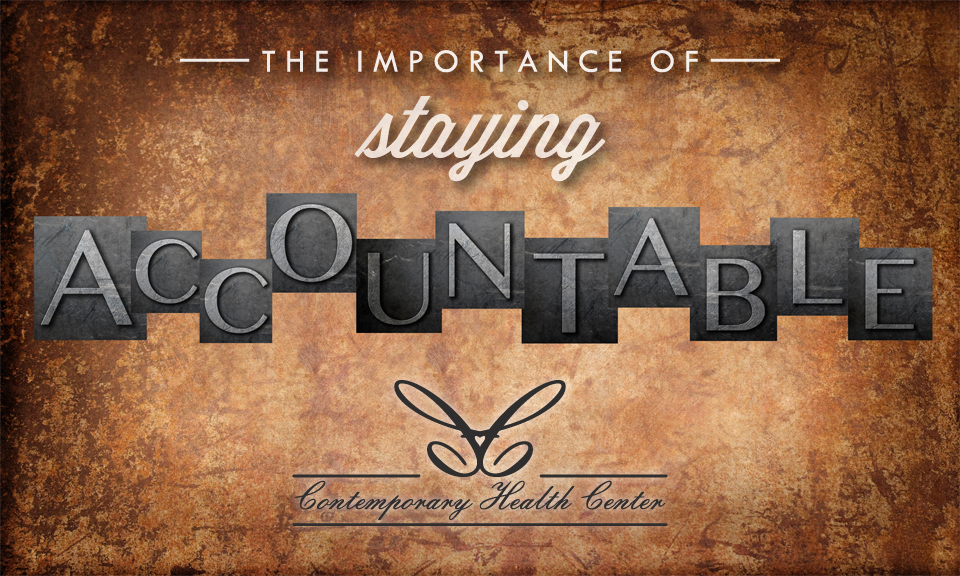The 21st century is home to a wide variety of weight loss solutions. While some are little more than fads, others can help you achieve the look and level of health that you desire. From wrist-worn gadgets to smartphone apps to prescriptions to pre-packaged meals, it’s quite possible that there has never been a better time to battle the bulge.
Even with all the diets and plans out there, it can be hard to take steps toward being healthier. Sometimes, knowing the right moves to make and having the willpower to make them aren’t enough. In the case of most of us, the addition of accountability can be tremendously helpful in keeping us on track. This week, we will look at a few ways you can maintain accountability and stay focused on your goals.
Â
1. Measure Your Success
For some of us, the word “scale” conjures a mixed bag of emotions – some of those being less than positive! But making friends with your scale can help paint an accurate picture of the effects of your weight-loss efforts. Use your scale as a reference point in checking the effects of the work you’re putting in. While slight daily fluctuations are normal for all of us, you’ll be able to actively keep up with your weight-loss journey.
Likewise, a measuring tape can be a huge help to those who are supplementing diets with strength-building exercise. Muscle takes up far less volume then fat does. So while you’re working out, if you’re not seeing drastic results on the scale, your tape measure can help to show you where weight, and inches, are dropping.
 2. Write It Down
Most nutritionists agree that keeping a food diary or daily health journal can be an excellent tool in achieving weight loss. While the task may sound taxing, it’s probably easier than you think. Make a list of the foods you’re eating (or the calories you’re taking in) and make notes about your energy levels as they move up and down throughout the day.
If this sounds like too much, make yourself some daily food goals and mark a little check mark in the top corner of your calendar on the days in which you hit your goals. Another great tip, if you’re keeping a food diary, is to write down what you plan to eat BEFORE you actually eat it. This practice will help you to think twice about the food you’re eating.
 3. Act Long Term
While some people keep a pair of “fat pants” as a sort of alert system that weight is creeping back on, consider flipping that idea on its head. If there’s a dress or a shirt or a pair of pants you’ve always wanted to be able to fit into, keep it handy as inspiration. Or, better yet, buy yourself a little something that’s a size or two down from where you are now. Then set a goal to be able to sport those new threads in a challenging but realistic time-frame.
 4. Find a Weight Loss BFF
An accountability partner not only reinforces your answerability, but also provides a consistent source of motivation. This can be a member of your family or even someone in your social circle with whom you share a desire to achieve a healthier lifestyle. Choose someone who won’t be afraid to challenge and inspire you. Likewise, you should do your best to encourage your partner with a “we’re in this together” attitude.
Call your buddy if you find yourself tempted or wavering, or for a little pep talk when you’re inclined to hit the snooze button and skip your morning exercise. This practice can be especially helpful when used alongside a program like Medi Weightloss. Not only can you swap tasty recipes, but you’ll be able to stay in touch about specific opportunities and weaknesses you might face.
 5. Reward Yourself
Rewards are an important part of motivation. As you set goals and reach them, simple gratification for a job well done can go a long way in keeping you on track. Now, this doesn’t mean doubling-down for a triple chocolate sundae after a week of cautious eating and intentional exercise. Instead, reward yourself for hitting a weight goal or for losing inches in a certain area.
If you’ve teamed up with an accountability partner, alternate rewarding each other for reaching milestones along your journey. Go and see a movie, play a round of golf or get a massage as a “treat” for seeing your goals to fruition.
 6. Zoom Out
The last and perhaps most important element to keep in mind is perspective. Remember that this is a long-term process. It’s taken you a lifetime to be where you are in your health journey, and though you may not be exactly where you want to be, keep in mind that this process is about progress, not perfection. Set a long-term goal, some midterm goals, then break them down into short-term goals. This is a strategy that could prove vital to your overall success.
Don’t focus on transitional milestones like a class reunion or bathing suit season. Instead, make your health a priority. Spend time developing a system that won’t fall apart when autumn hits or when the party lights go out. Make a plan that includes feeling better, living longer and looking your best.

Leave a Reply